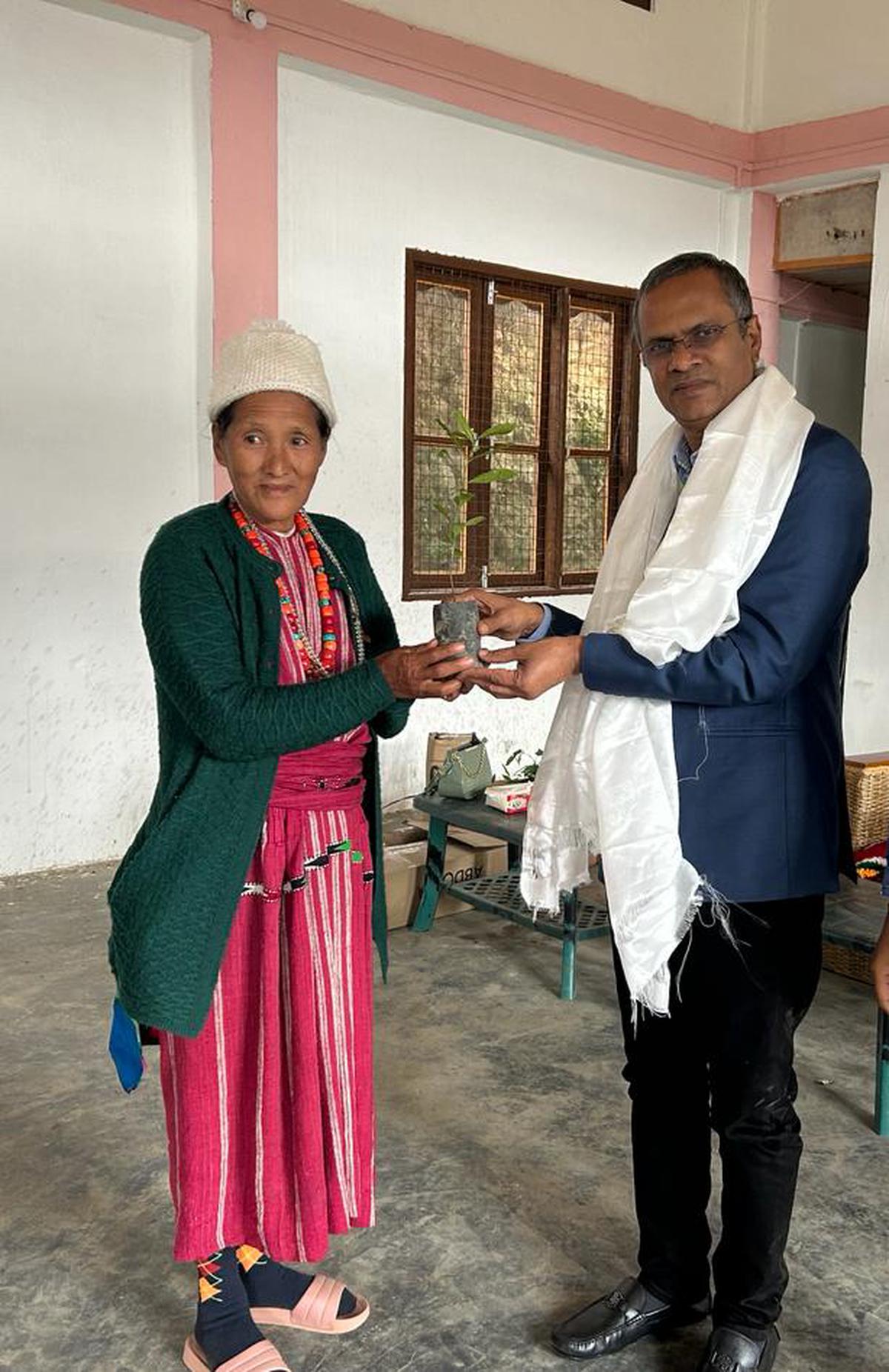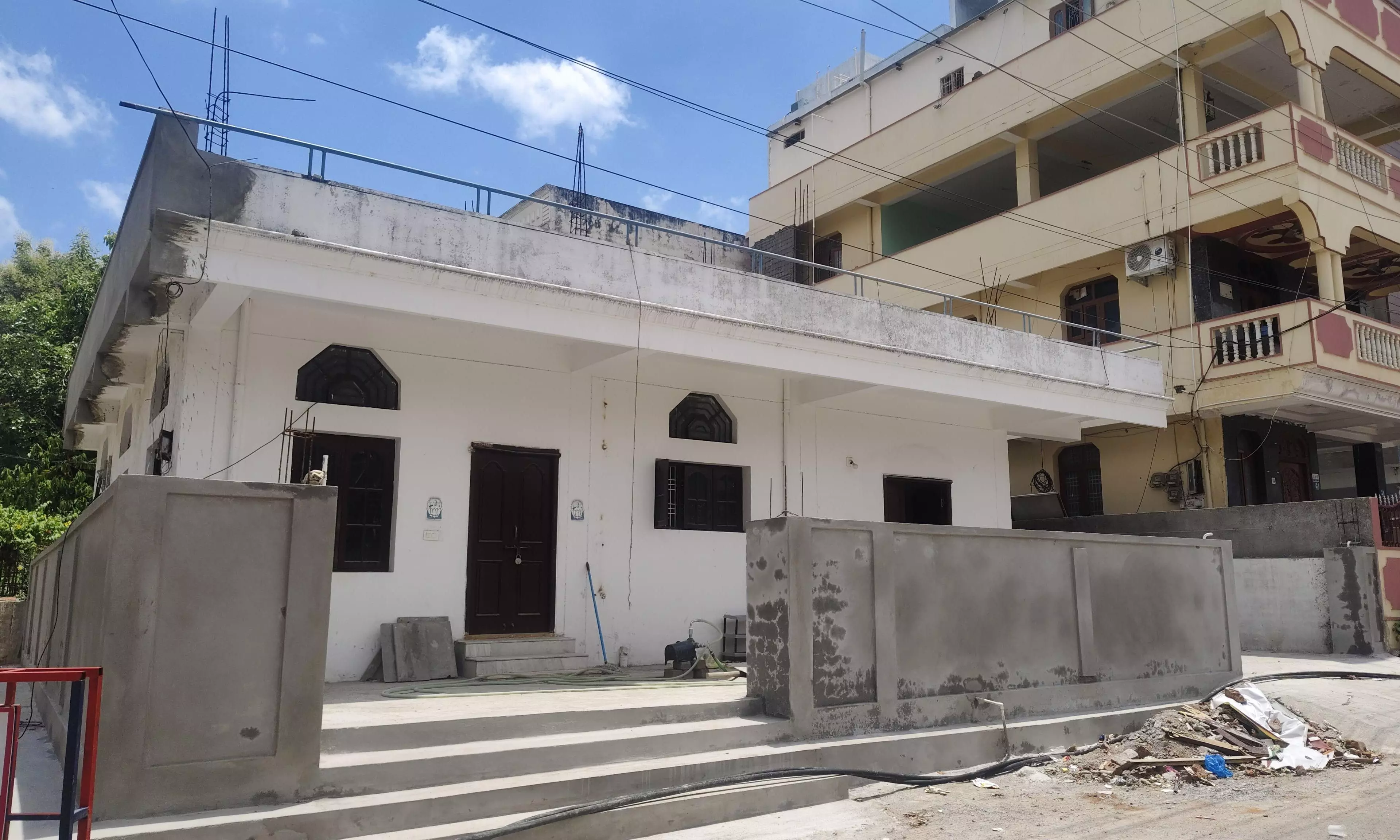
A new colourful flowering plant species discovered from Mishmi Hills of Arunachal Pradesh’s Lohit district was named ‘Begonia Narahari’, after a Hyderabad scientist.
| Photo Credit: By Arrangement
A new colourful flowering plant species, ‘Begonia Narahari’, with a distinctive feature of displaying a vivid blue iridescence in direct light, was discovered in Mishmi Hills of Arunachal Pradesh’s Lohit district by scientists.
If this latest find once again indicated the unexplored flora and fauna potential in the region, the interesting part is the plant has been named after a scientist from Hyderabad, G. Narahari Sastry, who also happens to be a former CSIR-Director of North East Institute of Science and Technology (NEIST), Jorhat (Assam).
Begonia is considered to be one of the largest and fastest growing genera of flowering plants, belonging to the family Begoniaceae, having more than 2,100 species and mainly distributed in tropical and subtropical regions of the world.
This new species was found to be growing on hill slopes composed of sandstone, covered by different species of mosses and ferns, together by University of Science & Technology Meghalaya (USTM)’s assistant professor Nazir Ahmad Bhat and research scholar Bipankar Hajong under the supervision of senior scientist Pankaj Bharali – both from CSIR-NEIST.
They have decided to name after Dr. Sastry in recognition of “his immense contribution to establishing the Germplasm Conservation Centre for the Bioresources at NEIST campus, his unwavering commitment to improving the well-being of the people in the northeastern region and for providing the necessary facilities to conduct our work”.

Former CSIR-Director of North East Institute of Science and Technology (NEIST), Jorhat (Assam), G. Narahari Sastry (on the right side).
| Photo Credit:
By Arrangement
The discovery was scientifically validated by evaluating the specimens using relevant literature, expert scrutiny and consulting the herbarium housed at the Botanical Survey of India, Eastern Regional Centre, Shillong and Arunachal Pradesh before concluding it was indeed yet to be described species within Begonia sect. The plant discovery was also published in reputed international journal ‘Phytotaxa’ in its latest issue.
In his late 50s, Dr. Sastry himself is very modest about the unique honour. “I had no role in the discovery. My name has been affixed because of the scientists’ affection towards me,” he remarked. What he had realised during his tenure as NEIST director from March 2019 till Jan.2024 was that the region has lot more to be explored.
“For our Germplasm conservation centre, we have tried to source several endangered plants by collecting and collating several varieties for their medical, aroma and even floriculture value from the area. We have also collected germplasm of cultivating crops like about 400 varieties of ginger,” explained the scientist, who has been a Shanti Swaroop Bhatnagar winner in 2011 and is presently teaching at the IIT-Hyderabad.







